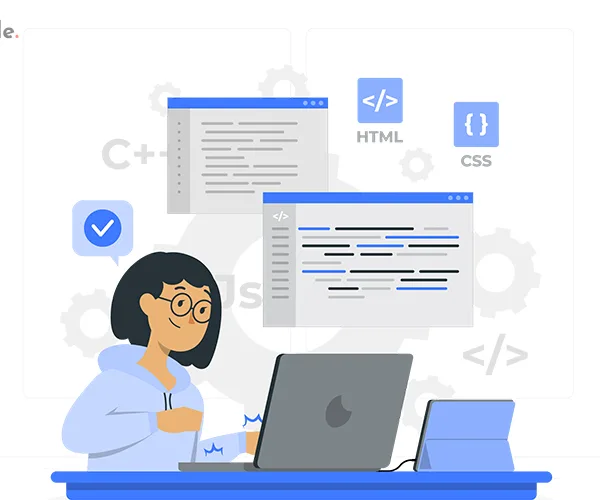Unlock the potential of JavaScript functions in this comprehensive guide. Dive deep into their versatility and power, empowering your code with modular brilliance. Let’s embark on a journey into the heart of web development.
Table of Contents
Introduction:
In the vast universe of web development, JavaScript stands as a cornerstone language, and at its heart lies a crucial building block – functions. In this blog post, we’ll embark on a journey deep into the realm of JavaScript functions, exploring their intricacies and uncovering the power they bring to your code. Whether you’re a novice or an experienced developer, let’s delve into the nuances of JavaScript functions, demystifying their usage and unveiling their potential.

I. Understanding JavaScript Functions:
Functions in JavaScript are versatile tools that allow developers to encapsulate a set of instructions within a named block of code. These blocks can then be invoked, enabling reusability and modularity in your scripts.
function myFunction(parameter1, parameter2) {
// Function body
// Perform actions using parameters
return result; // Optional
}
1. Function Declaration:
This is the fundamental way of defining a function in JavaScript.
function greet(name) {
return "Hello, " + name + "!";
}
2. Function Expressions:
Functions can also be assigned to variables, offering flexibility.
const multiply = function (a, b) {
return a * b;
};
3. Arrow Functions:
Introduced in ES6, arrow functions provide a concise syntax.
const square = (num) => num * num;
4. Anonymous Functions:
Functions without a name, often used as arguments in other functions.
setTimeout(function () {
console.log("Delayed execution");
}, 1000);
5. Callback Functions:
Widely used in asynchronous JavaScript, callback functions are passed as arguments to other functions.
function fetchData(url, callback) {
// Logic to fetch data
callback(data);
}
fetchData("https://example.com/api", function (result) {
console.log(result);
});
6. IIFE (Immediately Invoked Function Expression):
These functions execute immediately after they are created.
(function () {
// IIFE body
})();
II. Incorporating Functions in Real-world Scenarios:
Now that we’ve grasped the basics, let’s explore practical applications of JavaScript functions.
1. Form Validation:
Implementing a function to validate user inputs in a form.
function validateForm() {
// Validation logic
if (isValid) {
return true;
} else {
return false;
}
}
2. DOM Manipulation:
Utilizing functions to interact with the Document Object Model (DOM).
function changeBackgroundColor() {
document.body.style.backgroundColor = "lightblue";
}
3. API Requests:
Creating a function to handle asynchronous API requests.
async function fetchData(url) {
let response = await fetch(url);
let data = await response.json();
return data;
}FAQ
01. What is the significance of JavaScript functions in web development?
Explore how functions act as the backbone, enabling modular and reusable code for dynamic websites.
02. How do I declare and use arrow functions in JavaScript?
Learn the concise syntax of arrow functions and their advantages, enhancing code readability.
03. Why are callback functions crucial in asynchronous JavaScript?
Understand the role of callback functions in handling asynchronous operations and optimizing code execution.
04. In what scenarios should I use IIFE (Immediately Invoked Function Expression)?
Discover the practical applications of IIFE and how they provide immediate execution for specific use cases.
05. Can you provide real-world examples of using JavaScript functions in web development?
Explore hands-on examples, from form validation to API requests, showcasing the versatility of functions in various scenarios.
Conclusion:
JavaScript functions are the bedrock of efficient and maintainable code. By embracing various types of functions and understanding their applications, developers can harness the true potential of this programming language. As you embark on your coding journey, remember to leverage the versatility of JavaScript functions, making your scripts more robust and scalable.



